21 Things You Have To See in East Africa
Introduction
The morning air carries a symphony of sounds – the distant roar of a lion bidding farewell to night, a chorus of birds announcing dawn’s arrival, the rustle of tall grass dancing in the breeze.
Intrepid explorers have been answering the call of the wild since the 1800s when advancements in medicine allowed Westerners to travel deep into Africa (more) safely. These 19th-century safaris, where geographic exploration and big game hunting were often the goal, coincided with academic interest in and economic exploitation of this corner of the continent.
In the following 200 or so years, safari (meaning ‘journey’ in Swahili) has shifted from foot to 4x4, from hunting to observation, and from exclusive to accessible. It’s never been easier for an average person to not only see Africa but experience its incomparable energy and untamed beauty.
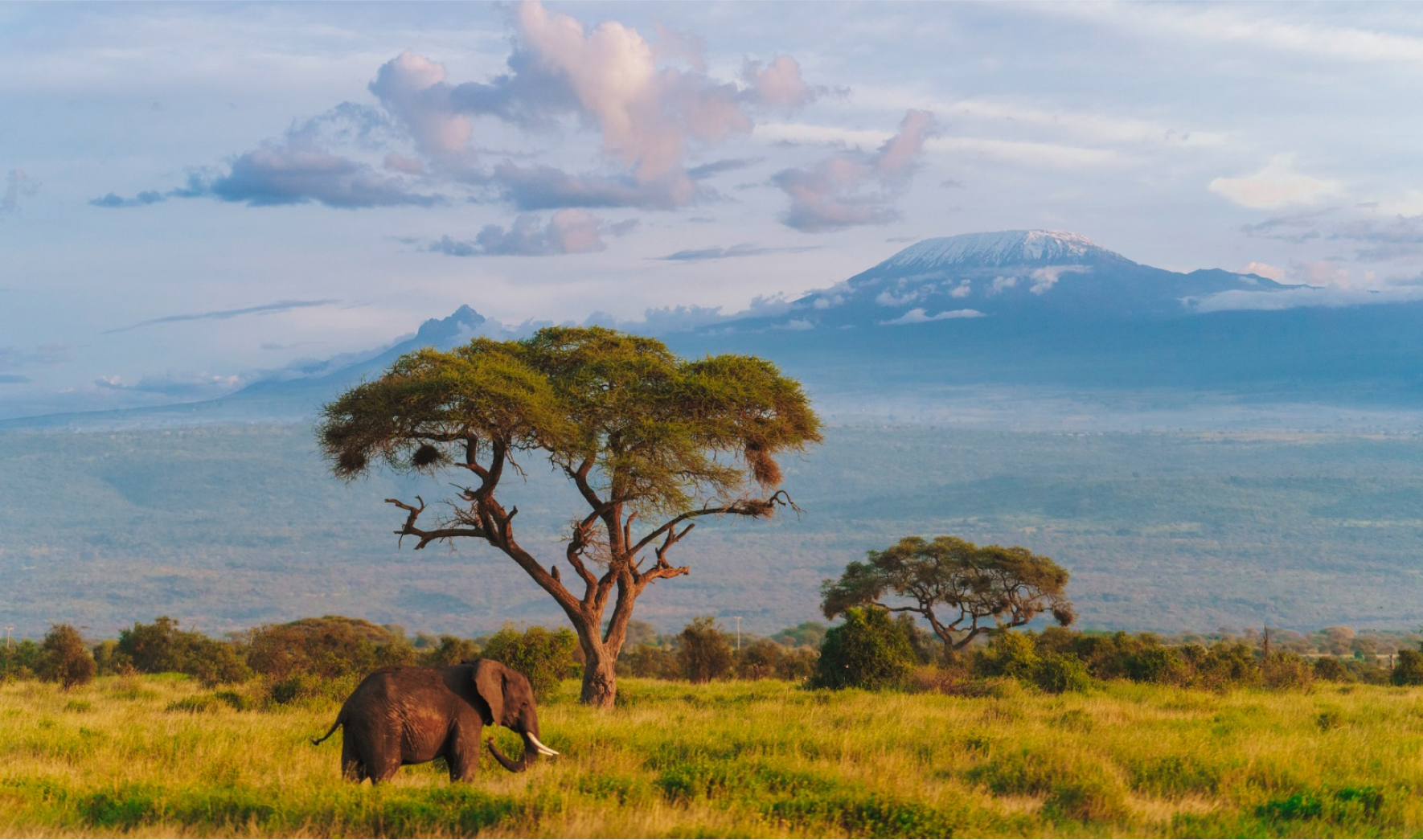
Today, going on safari is merely the beginning of what East Africa has to offer its visitors. Read on to explore 21 unmissable sights across five countries – Kenya, Tanzania, Uganda, Zambia, and the Seychelles. Think beyond the Big Five (though we'll certainly find them) as we dive into an infinity pool at the edge of a waterfall, bargain in a bustling market, and trek with gorillas through the forest.
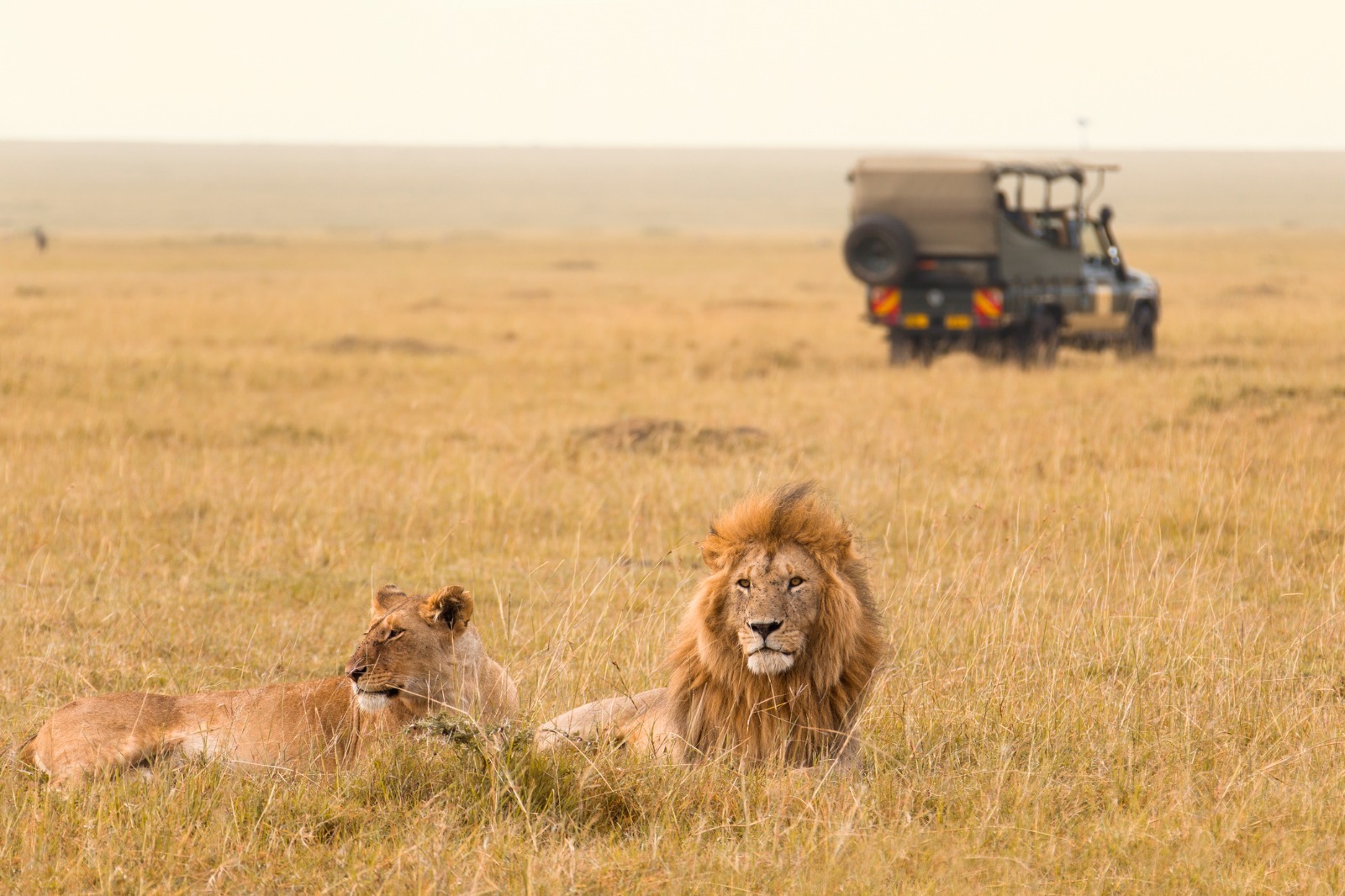
KENYA
Kenya Introduction
Kenya pioneered the safari, so it’s no wonder they’ve also perfected it. Beyond the savannas and wildlife preserves you’ve dreamed about, you'll find a country of striking contrasts – pristine Indian Ocean beaches, snow-capped mountains straddling the equator, ancient Swahili coastal towns, and sophisticated cities abuzz with culture. Practically speaking, travel in Kenya is fairly easy due to reliable infrastructure, short proximity between attractions, and lower cost than some other safari destinations.
Food Safari through Nairobi
You could (and some would argue you should) spend days eating and drinking your way through Nairobi’s buzzy bars and restaurants. Set your sights on these few standouts: Beit e Selam offers pan-African cuisine in a setting that feels like a secret garden – think fairy lights twinkling above a foliage-filled courtyard. Hero Bar, a playful superhero-themed drinkery, earned a spot on The World's 50 Best Bars list in 2022. For something uniquely local, head to Sierra Brasserie, East Africa’s answer to the craft beer movement, where the house-brewed beers pair perfectly with their excellent dining. Tucked into a historic residence, Talisman serves globally-inspired fusion with South Asian influences, surrounded by an ever-changing collection of local art. Offering “film, food & a view,”
Unseen Nairobi puts on independent cinema screenings and serves tasty sandwiches from its rooftop terrace.
Most of Nairobi's best spots require reservations, especially on weekends. Book ahead or ask for your hotel concierge’s help.
Unseen Nairobi puts on independent cinema screenings and serves tasty sandwiches from its rooftop terrace.
Most of Nairobi's best spots require reservations, especially on weekends. Book ahead or ask for your hotel concierge’s help.

The Great Migration in Masai Mara
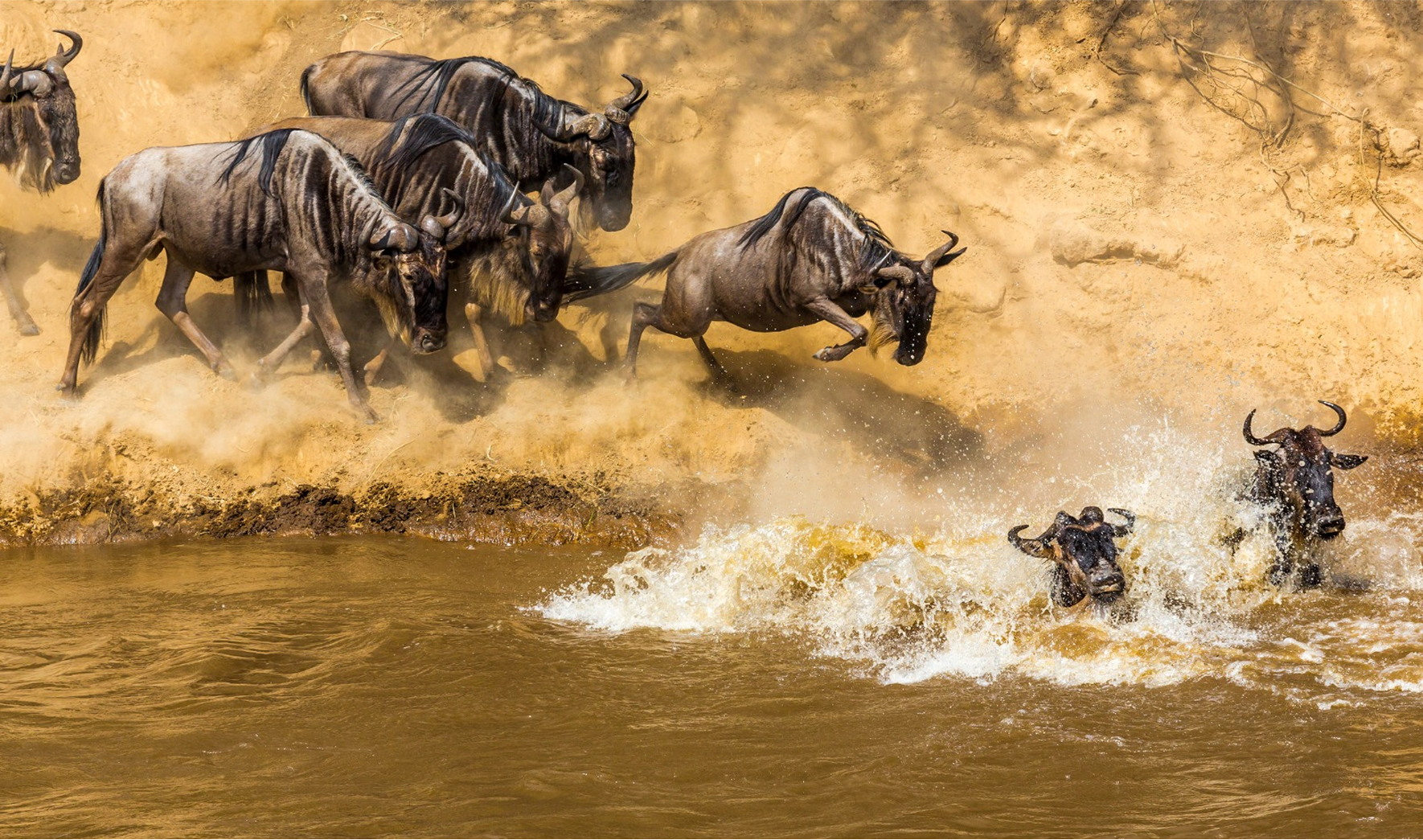
No matter how many wildlife documentaries you’ve seen, nothing can prepare you for the feeling of watching 1.5 million wildebeest and hundreds of thousands of zebras, coursing across the savanna like a living river.
The Masai Mara, a 583 square mile (1,510 square kilometer) reserve named for the Maasai people who have called these grasslands home for centuries, hosts not just the migration, but all of the Big Five – lions, leopards, elephants, African buffalo, and rhinoceros. Visit The Mara (as it’s known locally) between July-September to witness the migration from the Serengeti. Ask your guide about the local Maasai community visits to learn more about the human ancestral inhabitants of this land.
Lamu
If you don’t think of Kenya as a beach destination, the Lamu archipelago might just be the place that changes your mind. The glittering sea is graced with a string of islands on which you’ll find a mix of Arab architecture, Chinese and Indian influence, and skilled silversmiths and woodworkers. Hotels ranging from luxury vacation villas to posh resorts and bohemian hideouts have welcomed such guests as the Obamas, Mick Jagger, and Princess Caroline of Monaco.
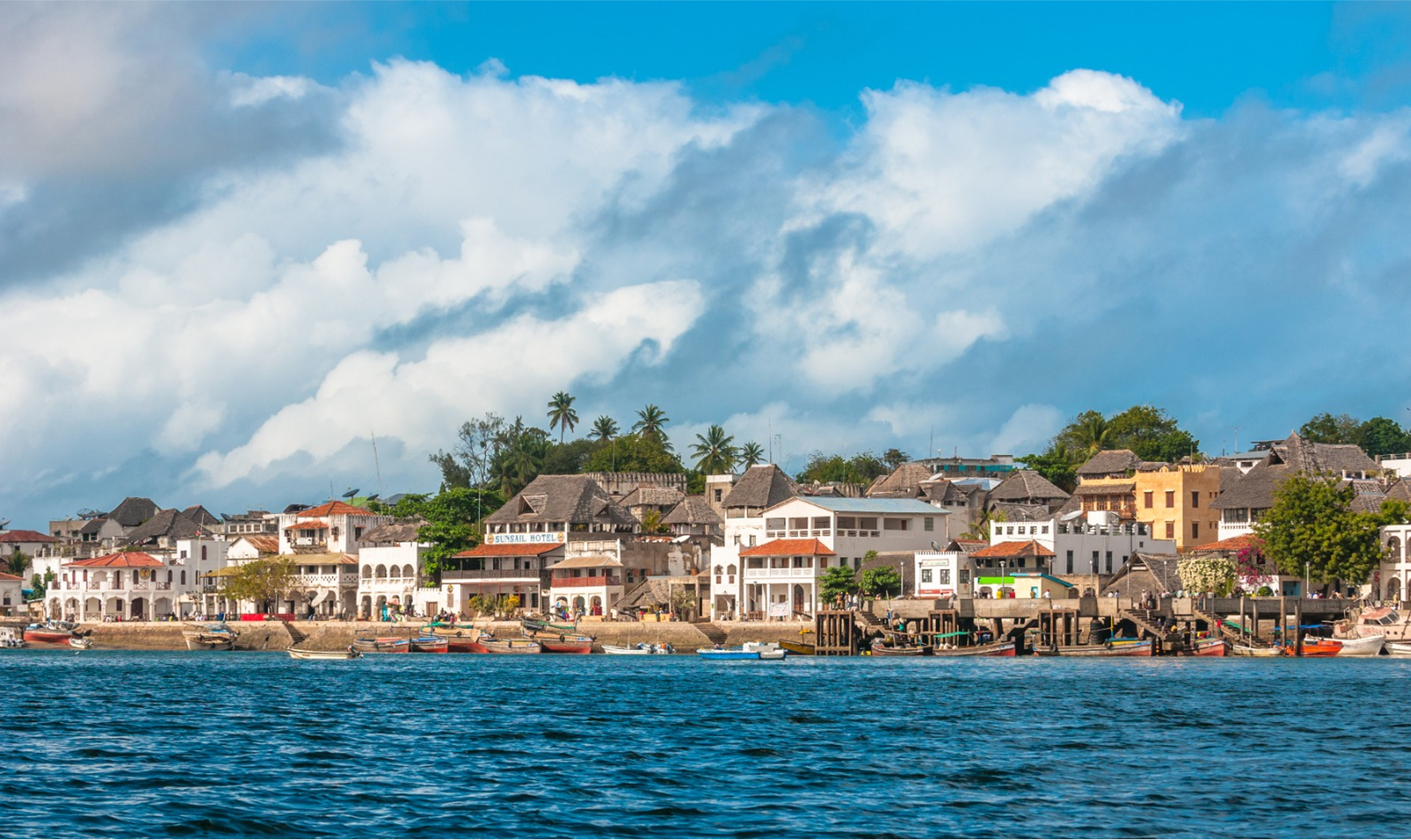
The largest island, Lamu, is home to UNESCO-listed Lamu Old Town, the oldest Swahili settlement along East Africa’s coastline. You’ll want to spend hours wandering the narrow, labyrinthine streets — which are accessible only by foot, donkey, or boda boda (motorbike taxis) — bargaining at the chaotic market, and admiring the ornately carved doorways. Nearby Shela village is where you’ll find the holiday homes of the wealthy along with boutiques, yoga studios, and art galleries.
End an evening here with a sunset cruise on a dhow (traditional wooden boat) or dining at the historic, free-spirited Peponi Hotel.
The islands’ population are largely Muslim and traditional, so be sure to dress conservatively while exploring.
End an evening here with a sunset cruise on a dhow (traditional wooden boat) or dining at the historic, free-spirited Peponi Hotel.
The islands’ population are largely Muslim and traditional, so be sure to dress conservatively while exploring.
Absoseli National Park
Amid the grassland, iconic acacia trees, and dusty terrain, large herds of elephants roam through Amboseli National Park. You may spot them keeping cool in the marshes or framing themselves so perfectly in front of snowcapped Mt. Kilimanjaro that it seems like they’re posing for your photo.
Amboseli may be most famous for its elephant population, but they share the stage with a supporting cast of stars: lions lounging in the grass, cheetahs scanning the plains, and giraffes browsing among the treetops. Plan to spend at least two full days here — morning and evening game drives offer the best viewing opportunities, while midday breaks let you relax at your lodge and watch wildlife visit nearby waterholes.
For a completely different kind of wildlife spectacle, head north to Lake Nakuru where the cotton-candy-colored flamingos congregate by the thousands, creating one of Africa’s most photographed wildlife scenes. The best displays are during the dry season (June to September) when the lake's alkaline waters concentrate the algae that the birds eat. Beyond the flamingos, you'll spot white rhinos grazing near the lakeshore and troops of baboons in the surrounding forests.
Amboseli may be most famous for its elephant population, but they share the stage with a supporting cast of stars: lions lounging in the grass, cheetahs scanning the plains, and giraffes browsing among the treetops. Plan to spend at least two full days here — morning and evening game drives offer the best viewing opportunities, while midday breaks let you relax at your lodge and watch wildlife visit nearby waterholes.
For a completely different kind of wildlife spectacle, head north to Lake Nakuru where the cotton-candy-colored flamingos congregate by the thousands, creating one of Africa’s most photographed wildlife scenes. The best displays are during the dry season (June to September) when the lake's alkaline waters concentrate the algae that the birds eat. Beyond the flamingos, you'll spot white rhinos grazing near the lakeshore and troops of baboons in the surrounding forests.
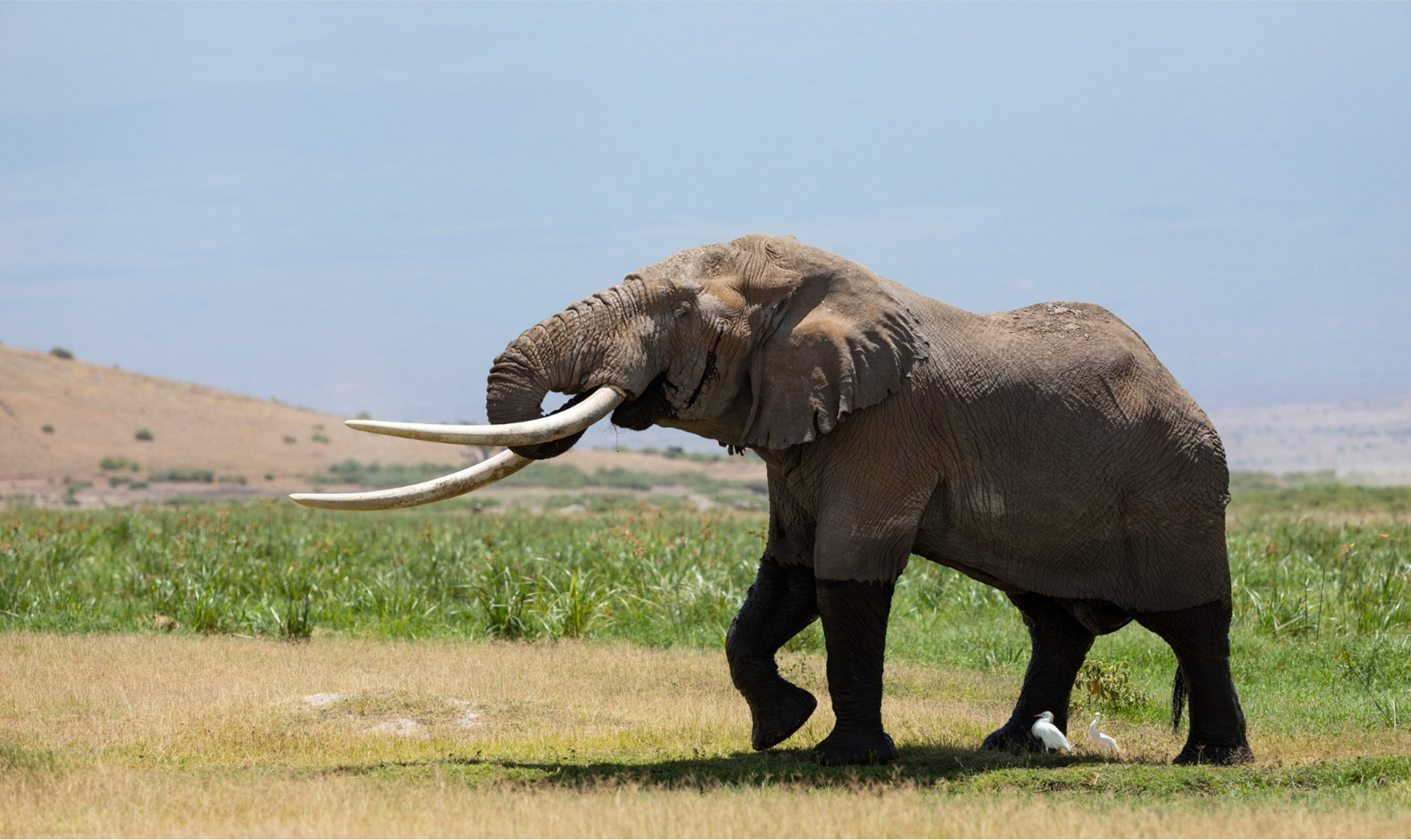
Watamu, Kenya’s Very Own Little Italy
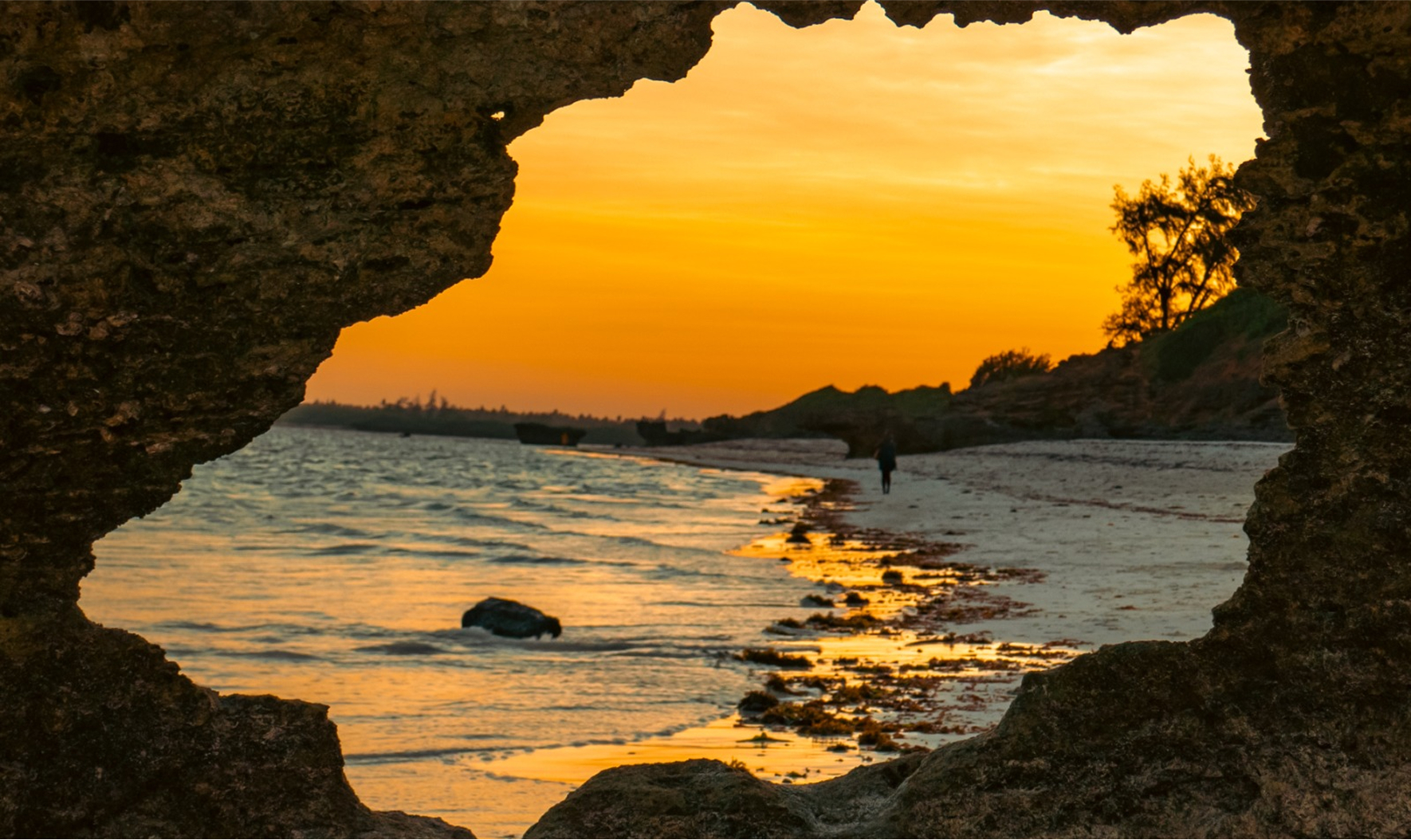
It may come as a surprise that a slice of Italy awaits in the coastal town of Watamu. Restaurant menus contain pasta, pizza, and gelato, some street signs are in Italian, and many locals even speak the language. What brought the Italian influence? The establishment of the nearby Luigi Broglio Malindi Space Center in the 1960s when it served as a launch site for Italian and international satellites.
Today, visitors can set sail to spot migrating humpback whales (October), go scuba diving at the marine park, and watch the sun set over the red sandstone canyon at Marafa Hell’s Kitchen.
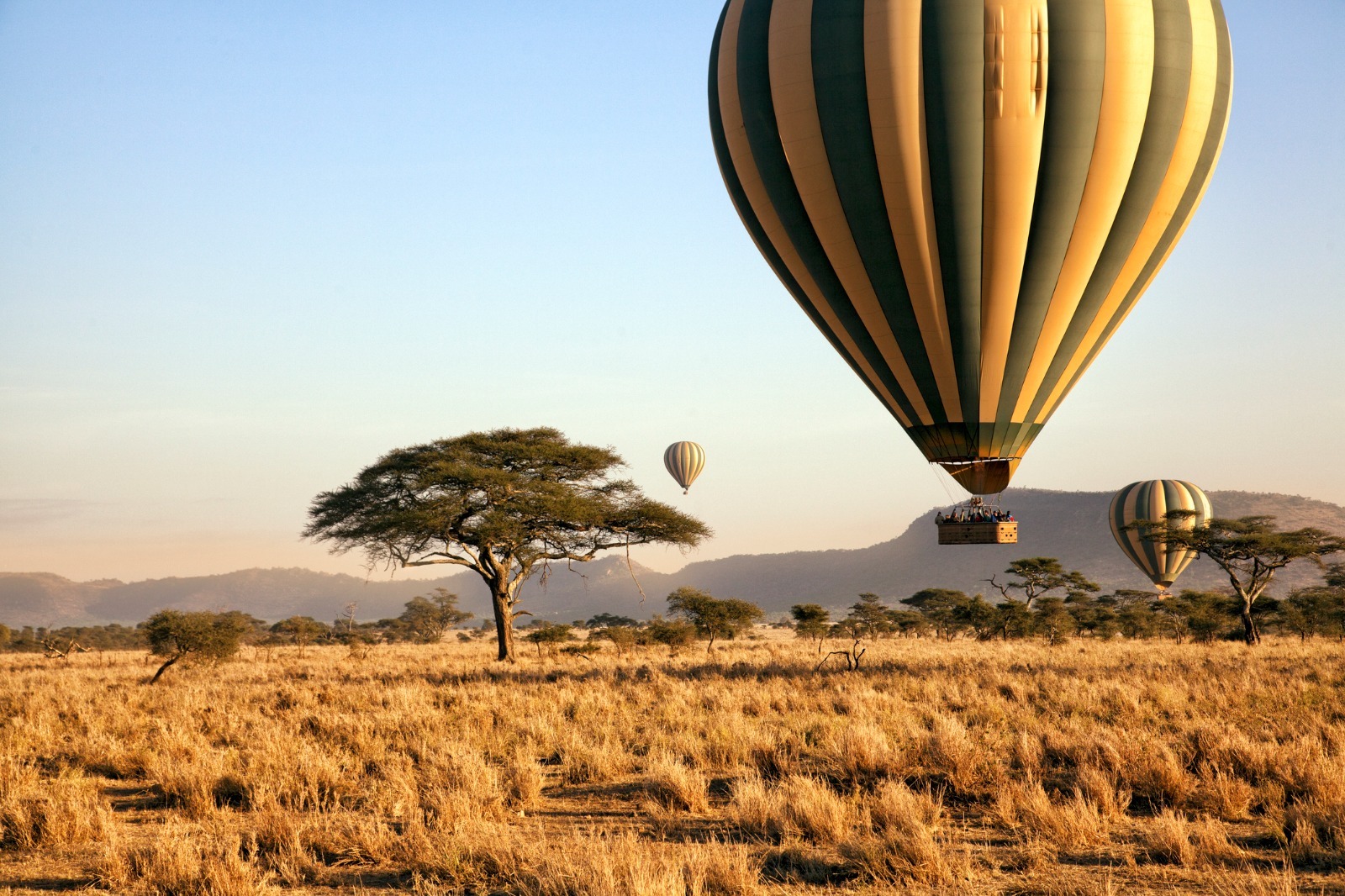
TANZANIA
Tanzania Introduction
As with Kenya, you’ll find plenty of wildlife parks to explore in Tanzania. The difference is that the latter is considered a “wilder” safari destination. The larger size of both the country and its national parks means that you’re likely to encounter fewer tourists than you’ll find elsewhere. You’re also likely to pay a bit more for a safari here. Between game drives, you can summit Mount Kilimanjaro (or at least sample the rich coffee grown on its foothills), sunbathe on Zanzibar’s palm-fringed beaches, and explore historic streets of a former colonial city.
Serengeti National Park
The Seregeti’s southern plains draw crowds during the dry season (June-October) for the Great Migration. This time of year offers lots of sunshine and the possibility of catching the iconic wildebeest river crossings.The northern Serengeti, on the other hand, offers a more intimate safari experience. The Lamai Wedge has resident wildlife year-round, including the largest population of Rüppell's griffon vultures in East Africa.
The rocky hills serve as sun-warmed perches for lions and leopards, while the Mara River's lesser-known crossing points see dramatic wildebeest action without the tour vehicle bottlenecks common in the south. If the Great Migration isn’t on your must-see list, visit instead during green season (November-December) when newborn gazelles wobble across rain-freshened grasslands and you’ll contend with fewer fellow tourists.
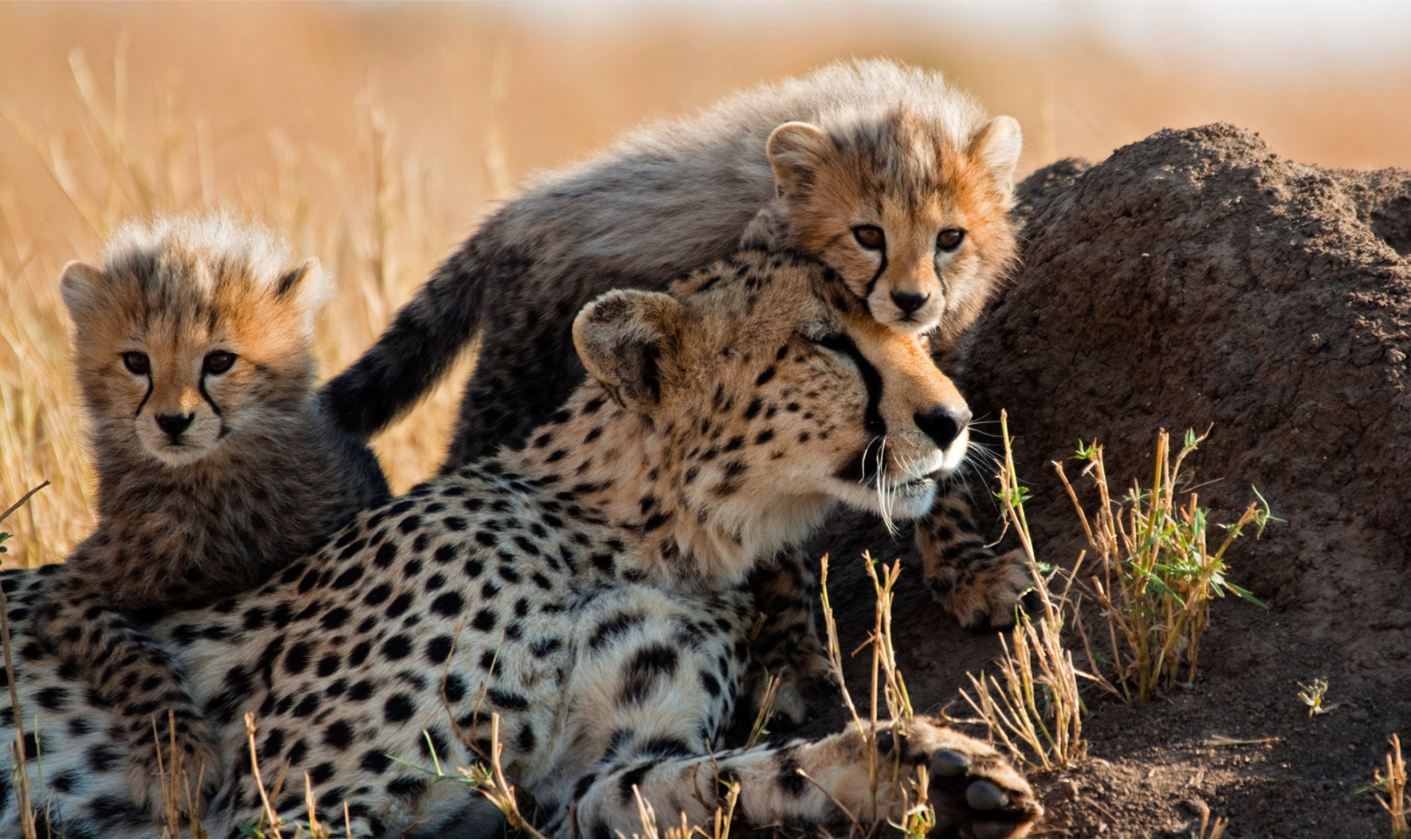
Ngorongoro Crater
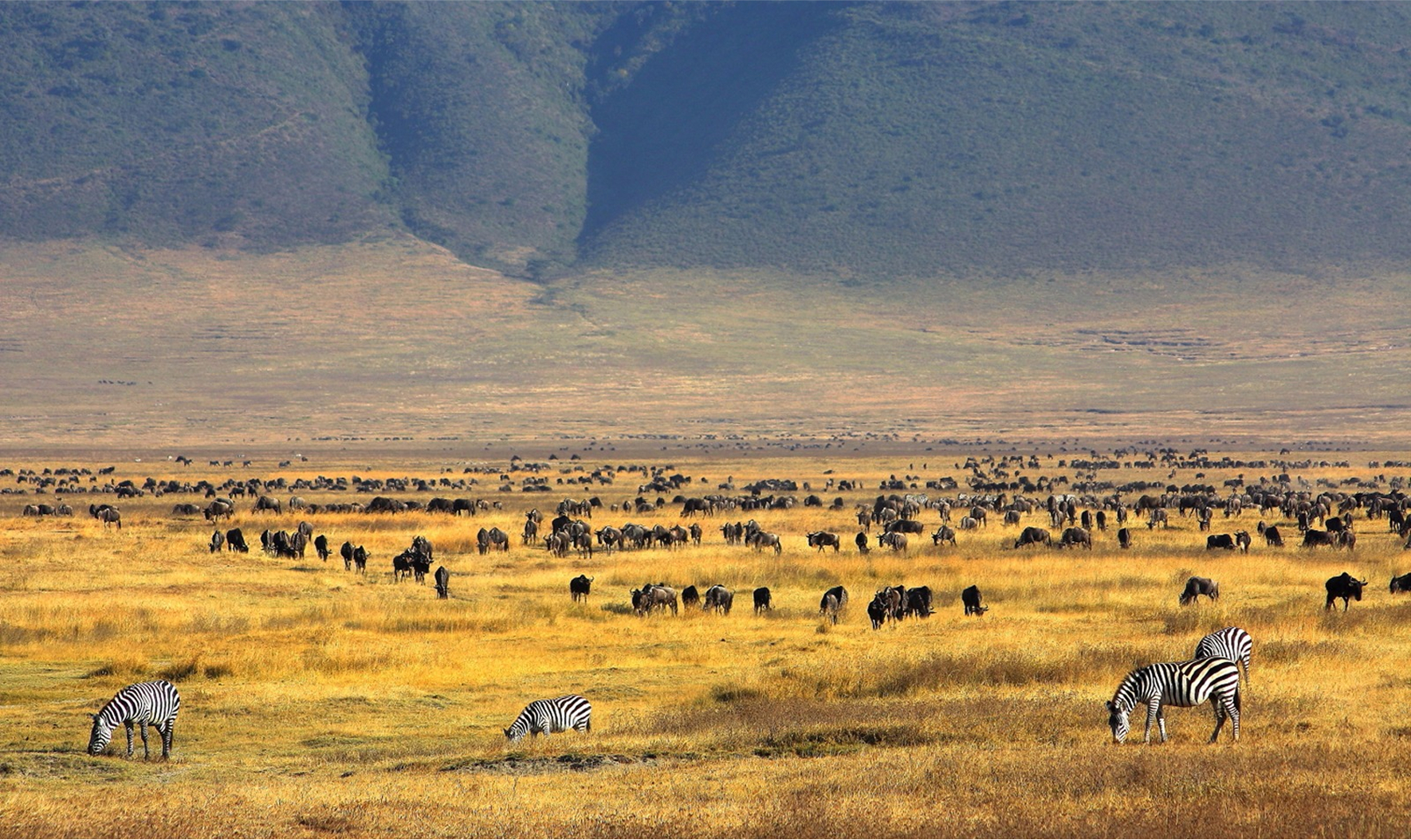
Formed by a collapsed volcano millions of years ago, the 10-mile-wide Ngorongoro Crater is a natural amphitheater where wildlife drama unfolds daily as predators and prey perform their roles in the circle of life. The caldera is home to elephants, leopards, baboons, vervet monkeys, spotted hyenas, lions, hippos, wildebeest, zebras, buffaloes, and Grant's gazelles.
Ngorongoro Crater is also fascinating for its role in human evolutionary history. The crater is considered a cradle of humanity due to its many archaeological discoveries including fossils, tools, and early hominid footprints dating back 3.6 million years.
While most visitors make a day trip, staying at one of the crater rim lodges lets you descend before dawn when lions are still active and as the black rhinos emerge from the forests. Ideal visitation is between June and September when the grass is short and wildlife spotting peaks.
Stone Town, Zanzibar
The island of Zanzibar is a worthwhile diversion from your safari-filled days. Its glittering waters invite visitors to while away the hours swimming or sunning on the white sand shores. Don snorkel gear and head off on a hired boat to spot schools of fish navigating coral gardens and watch dolphins jump and play in the Indian Ocean.
Beyond the beach, Zanzibar's UNESCO-listed capital of Stone Town has multicultural heritage on full display – carved doors tell stories of Indian merchants, while the muezzin’s call to prayer echoes off Portuguese-era walls. Start at Darajani Market where spice traders hawk vanilla and cloves, then weave through narrow alleys to the former slave market site, now a powerful memorial. Take a dhow (a traditional wooden boat) to Prison Island, where giant Aldabra tortoises roam the grounds of the former yellow fever quarantine station. Time your visit to catch sunset from the rooftop tea house at Emerson on Hurumzi, where the evening prayer call mingles with African jazz.

Mount Kilimanjaro
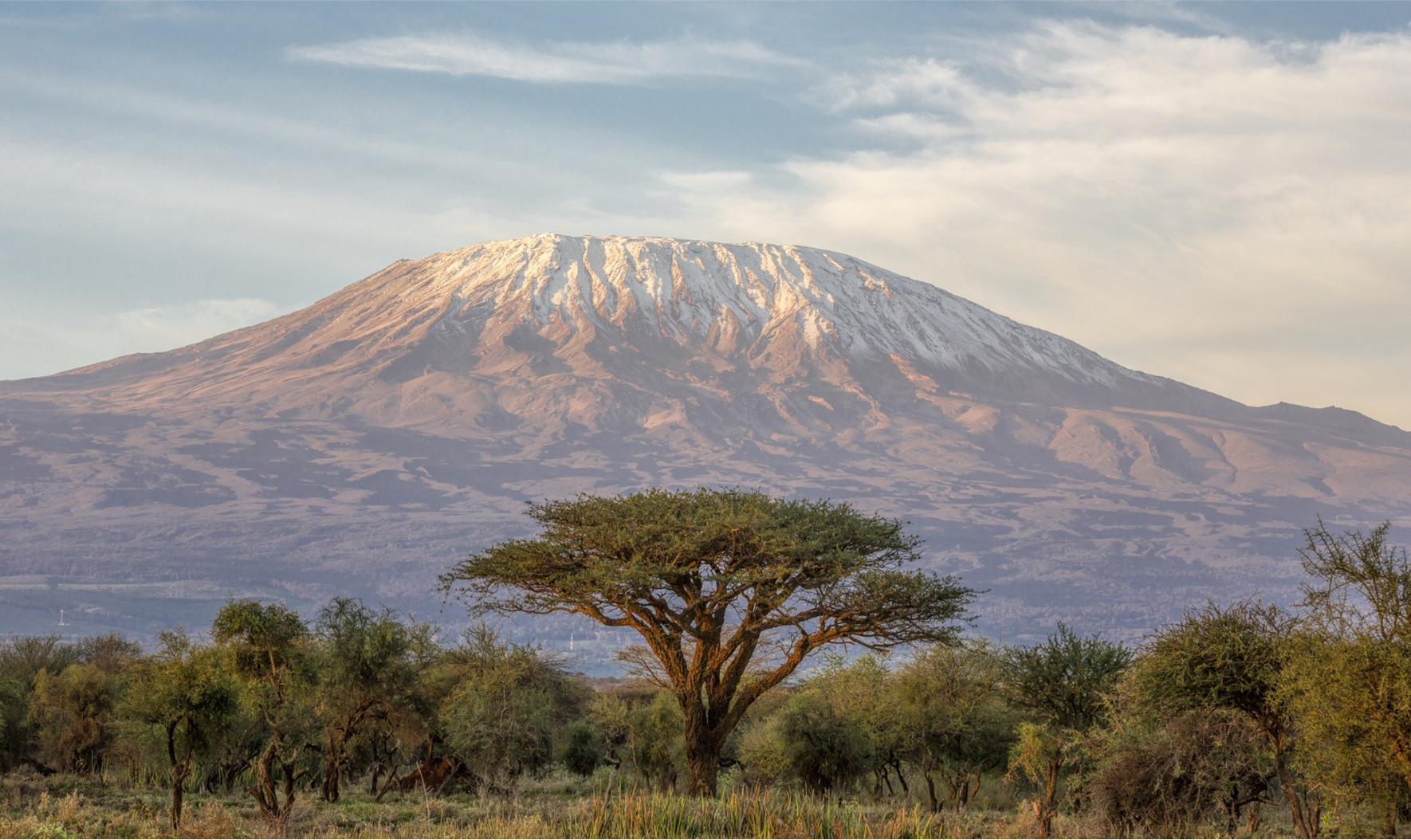
The towering Mount Kilimanjaro isn't just for summit-seeking trekkers – though the roof of Africa draws thousands of climbers annually who tackle the six-day Marangu or more scenic Machame routes to Uhuru Peak. While reaching the 19,341-foot (5,895-meter) summit requires a high level of fitness and about $2,000 in permits and guide fees, the mountain's lower slopes also offer compelling adventure. Most climbers begin their ascent through rainforest zones teeming with black-and-white colobus monkeys before pushing through heath and moorland to the arctic-like summit zone, where the mountain's rapidly retreating glaciers still cling to life.
For those seeking a different taste of Kilimanjaro, the mountain's lower reaches host some of Tanzania's finest coffee plantations, particularly around the town of Marangu. Family-run operations like Kahawa Shamba offer tours where you can follow beans from plant to cup, learning traditional processing methods while sampling organic arabica grown in the mountain's rich volcanic soil. The best time to visit is during the harvest season (June to December), when you can join picking sessions and watch the intensive sorting process. Many plantations also offer homestays, letting you wake up to misty mountain views and coffee freshly roasted just hours from where it was grown.

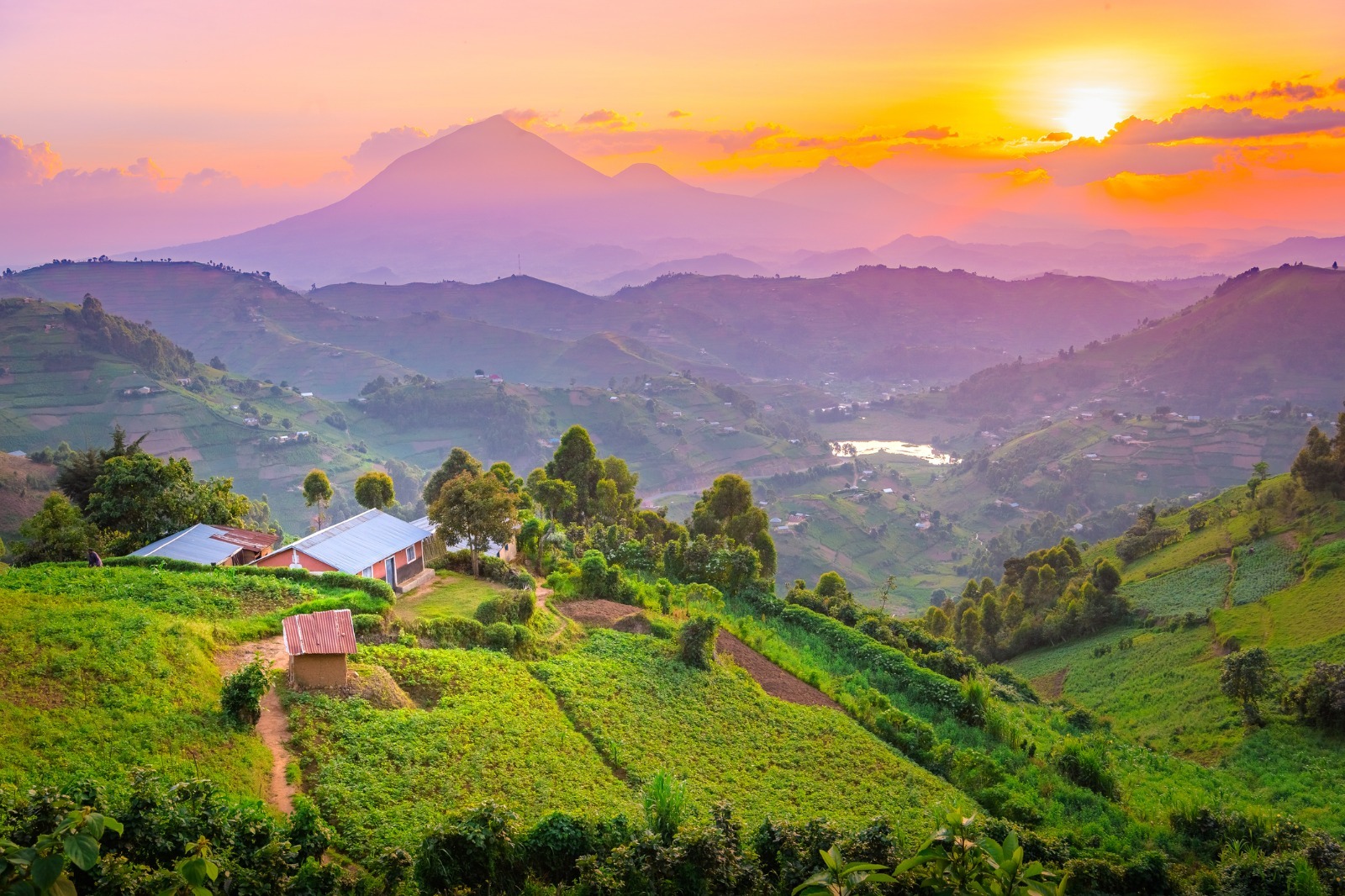
UGANDA
Uganda Introduction
While Kenya and Tanzania dominate East Africa's safari circuit, Uganda offers something distinct: the chance to trek through misty forests in search of mountain gorillas. This more intimate wildlife experience is complemented by classic savanna safaris where lions climb trees in Queen Elizabeth National Park. The country's compact size makes it possible to move from tracking chimpanzees in Kibale's rainforest to watching elephants roam Murchison Falls' grasslands in just a few hours. Though the tourism infrastructure isn't as polished as its eastern neighbors, Uganda's lower visitor numbers and competitive prices make it an appealing choice for travelers seeking Africa's wildest experiences without the crowds.
Bwindi Impenetrable Forest
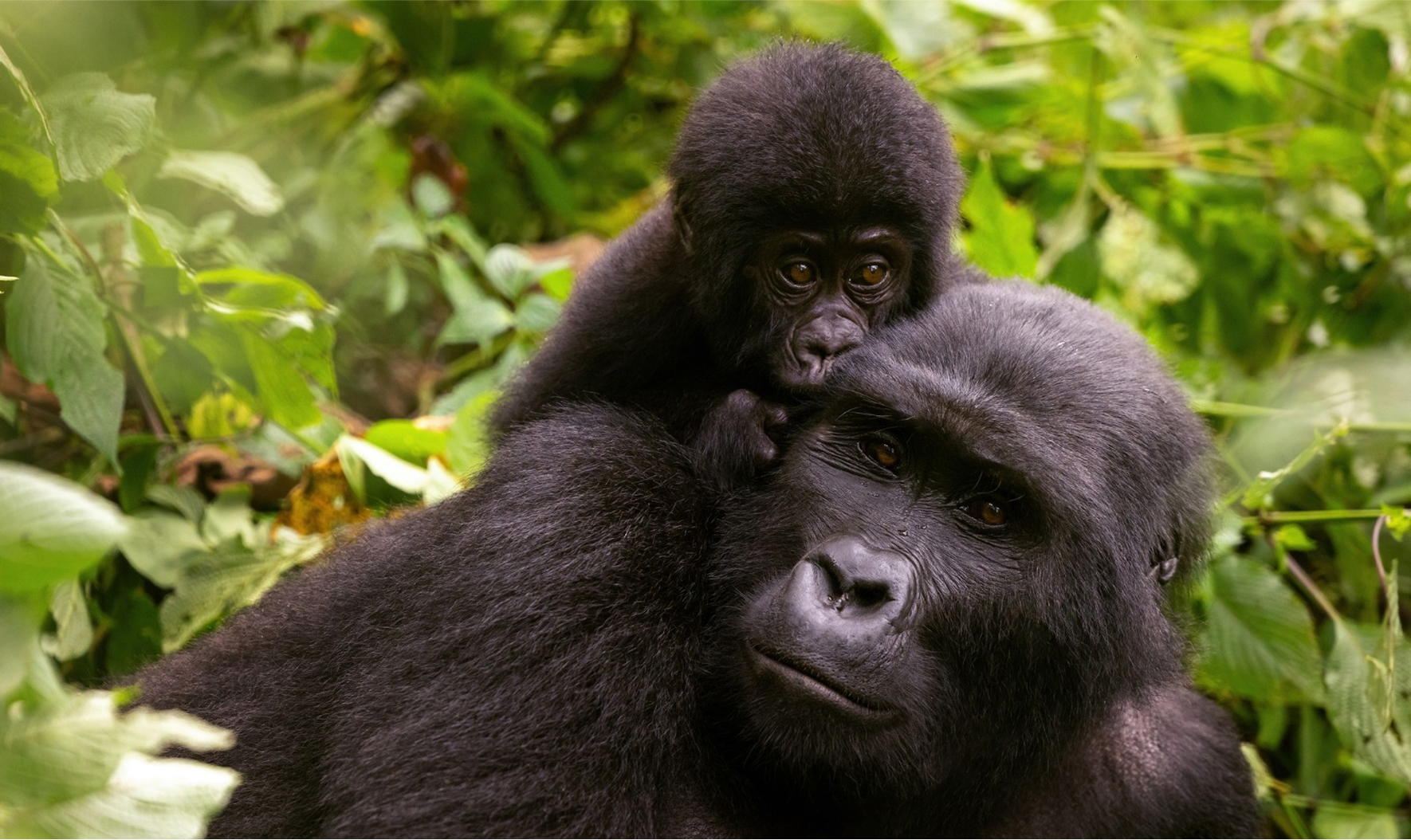
Deep in southwestern Uganda, Bwindi Impenetrable National Park lives up to its name with layers of ancient trees, bamboo, and thick undergrowth that blanket steep mountain ridges. This UNESCO World Heritage site is home to nearly half of the world's remaining mountain gorillas — around 450 individuals split between 50 family groups.
Visitors can go gorilla trekking—a hike through the forest to observe the animals—from one of four trailheads, each accessing different gorilla families. While permits are limited in number and costly ($800+ per person as of 2025), the money directly supports conservation efforts and local communities.
Most visitors stay in lodges near the trailheads, ranging from basic guesthouses in Buhoma village to luxury eco-lodges perched on the forest edge, where you might spot monkeys swinging through the canopy during breakfast.
Murchison Falls
At Murchison Falls, the Nile squeezes through a 23-foot gap before plunging 140 feet, creating the world's most powerful waterfall. The surrounding national park — Uganda's largest — offers a classic East African safari experience, with dense woodland and grasslands hosting 75+ mammal species, including large herds of elephants, giraffes, and Uganda's largest population of Nile crocodiles.
Take a boat safari below the falls where elephants drink alongside rare shoebill storks. The best views come at dawn when rainbow-lit mist rises from the gorge. Most tourists skip the hike to the top — but if you’re capable of it, don't miss this. The trail offers close-up views of the falls' raw power and resident rock hyrax colonies.
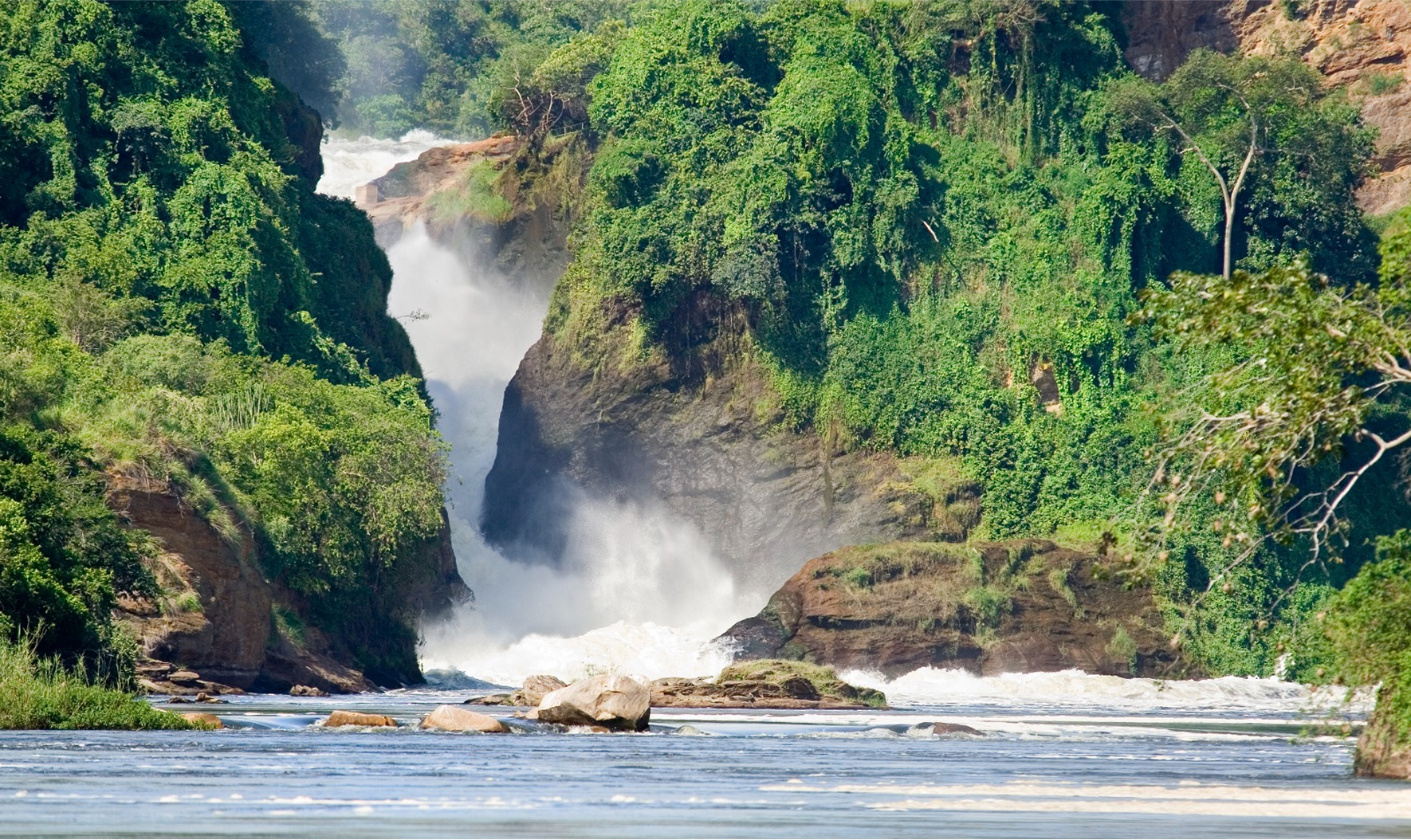
Queen Elizabeth National Park
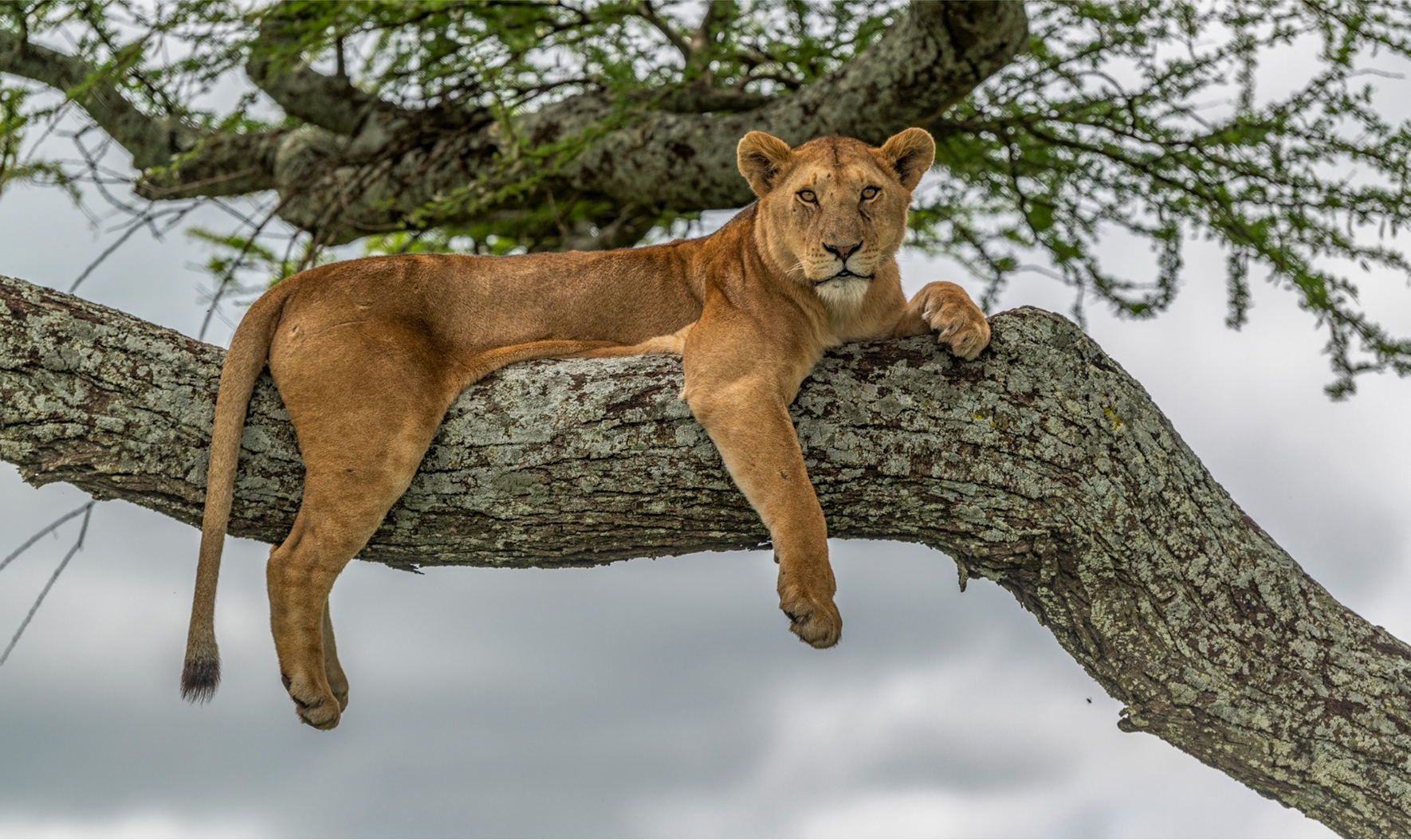
Queen Elizabeth National Park, Uganda’s most popular, is home to tree-climbing lions, a rarity for the species. These lions frequently drape themselves across the thick branches of fig and acacia trees, sometimes spending up to 20 hours a day perched 20 feet above the savanna. While the behavior started as a way to catch cooling breezes and escape the biting flies that plague the ground level, the lions have turned their elevated positions into tactical advantages. From their perches, they can spot prey across the sweeping grasslands while remaining hidden until the perfect moment to strike.
The best time to spot them is during the heat of midday, when you'll often find multiple lions sprawled along the branches, their tails and limbs dangling lazily over the sides. Guides know exactly which fig trees are the favorites, though you'll still need patience and sharp eyes to distinguish their tawny coats from the sun-bleached bark.
Lake Bunyonyi
Lake Bunyonyi's mirror-like surface stretches between terraced hillsides in southwestern Uganda, where local farmers have sculpted the landscape into a patchwork of small plots climbing up from the shoreline. The lake has 29 islands which create a maze of waterways best explored by traditional dugout canoe (motorized boats are also available if you're short on time).
In the local Rukiga language, Bunyonyi means "place of many little birds.” You’re likely to spot African kingfishers, grey-crowned cranes, and weaver birds building their elaborate nests in the papyrus reeds. At 6,500 feet above sea level, the lake's high altitude keeps temperatures pleasantly cool and, more importantly, there are no crocodiles or hippos to worry about, making it one of the few African lakes where you can safely swim.
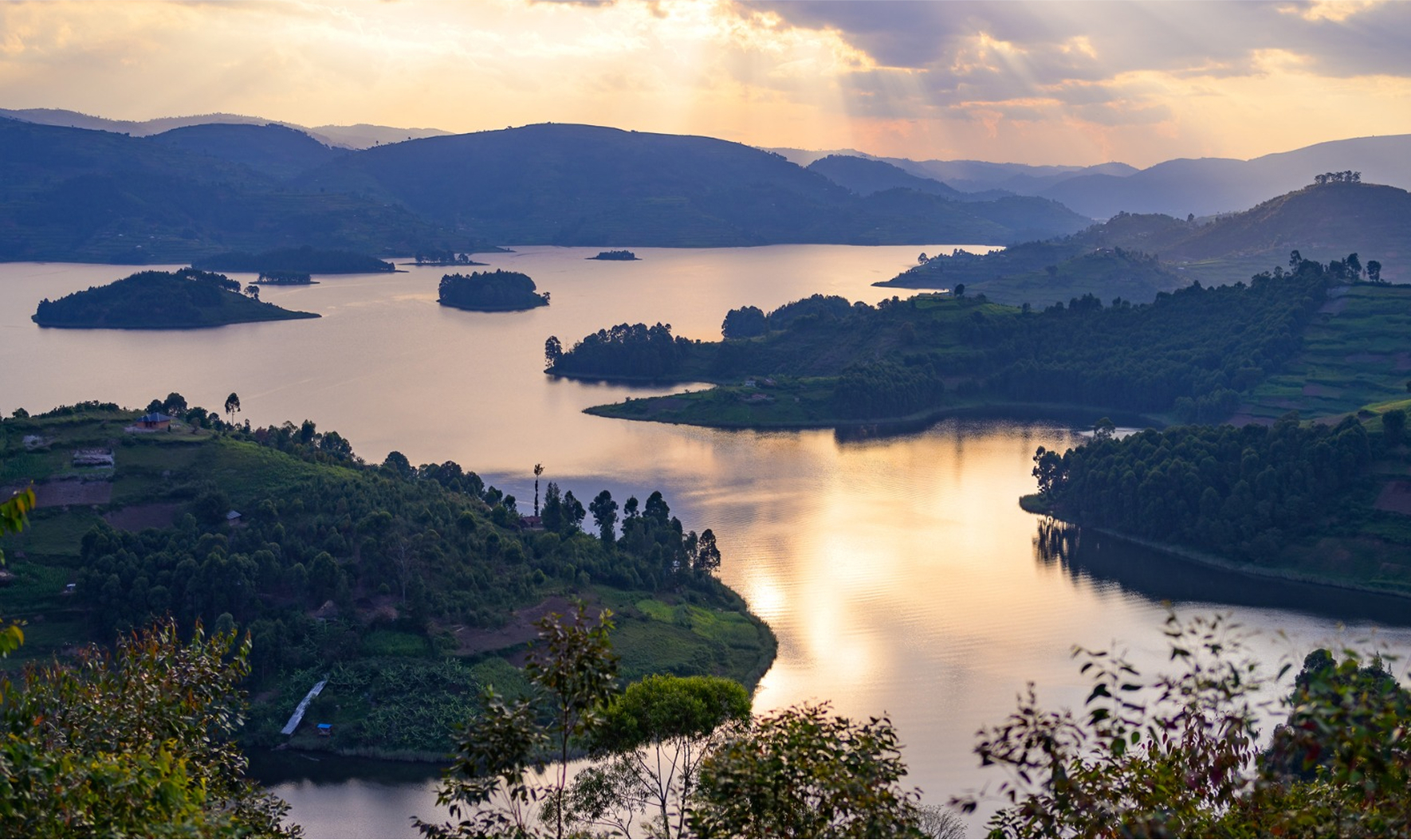
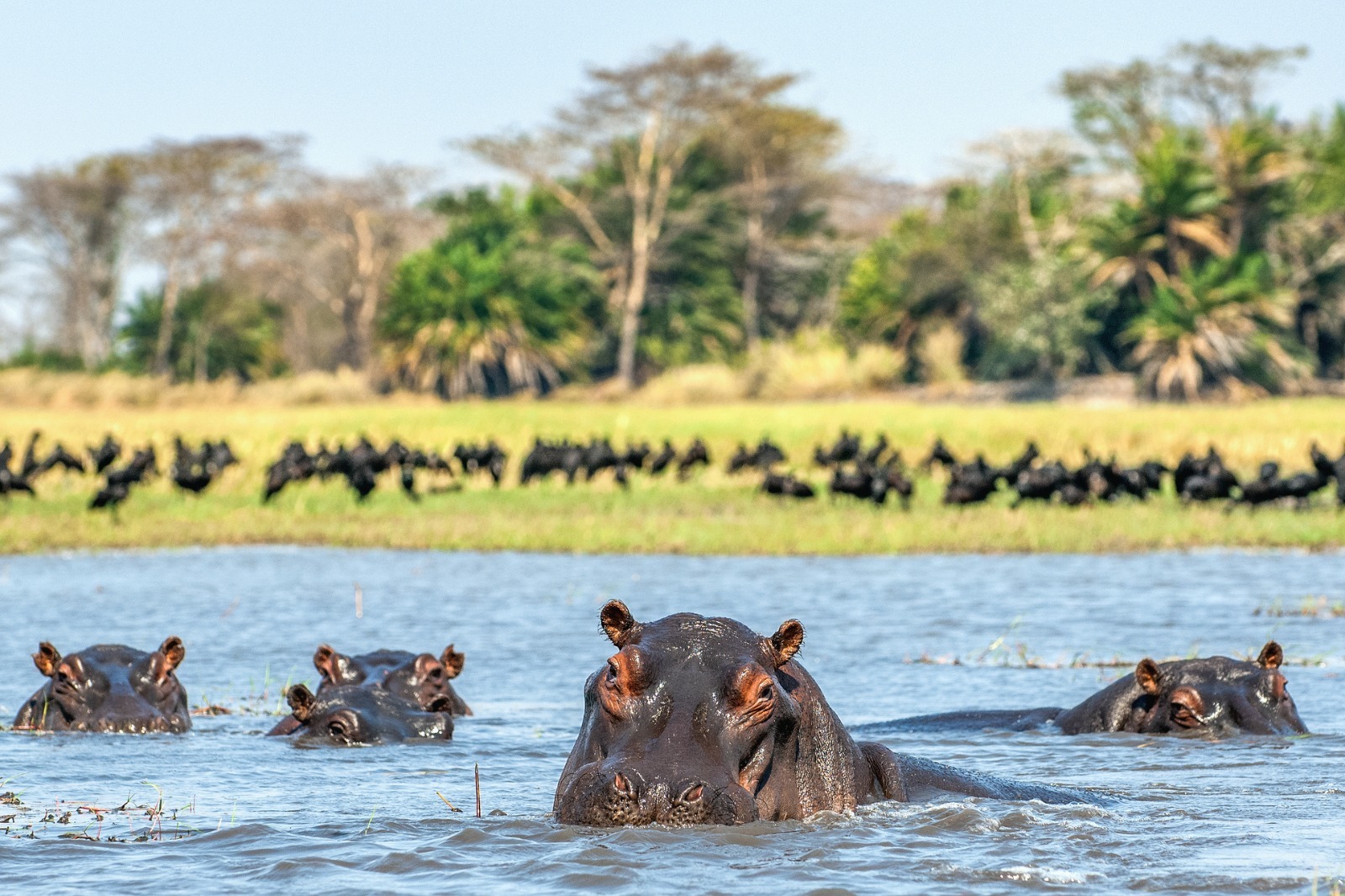
ZAMBIA
Zambia Introduction
Sometimes overlooked in favor of its famous neighbors, Zambia quietly delivers some of Africa's most extraordinary wildlife experiences. This is the birthplace of the walking safari, where you'll trade the confines of a vehicle for boots-on-the-ground encounters with elephants and lions in South Luangwa National Park. The country's remote wilderness areas and unfenced camps mean you're more likely to hear a hippo's grunt than another tourist's camera click. Victoria Falls' thundering curtain of water serves as a natural border with Zimbabwe, while the untamed Lower Zambezi lets you watch elephants from a canoe as they drink from the river's edge. Though getting around requires more effort, the reward is an authentic safari experience that feels more like exploration than tourism.
Victoria Falls

Standing at the edge of Victoria Falls in Zambia offers one of Africa's most visceral natural encounters. The Knife-Edge Bridge brings you face-to-face with the raw power of the Zambezi River as it plunges 355 feet into the gorge below, creating a perpetual rainbow in the mist. While the western side draws crowds, savvy photographers head to the eastern cataract for unobstructed shots without the constant veil of spray.
Between September and December, adventurous travelers can take the ultimate plunge into Devil's Pool – a natural infinity pool perched right at the falls' edge, though you'll want to book well in advance to secure a spot.
Livingstone
The falls are just the beginning of what Livingstone (Zambia's tourism hub) has to offer. Late afternoon presents a tough choice: drift down the Zambezi on a sunset cruise, spotting hippos wallowing in the shallows and elephants coming to drink at the river's edge, or head into Mosi-oa-Tunya National Park to track white rhinos with armed rangers.
For those seeking an adrenaline rush, the Batoka Gorge becomes your playground – whether you're tackling the grade-5 rapids by raft, free-falling into the gorge on the swing, or taking in the falls' full majesty from a microlight soaring through the morning air.

South Luangwa National Park
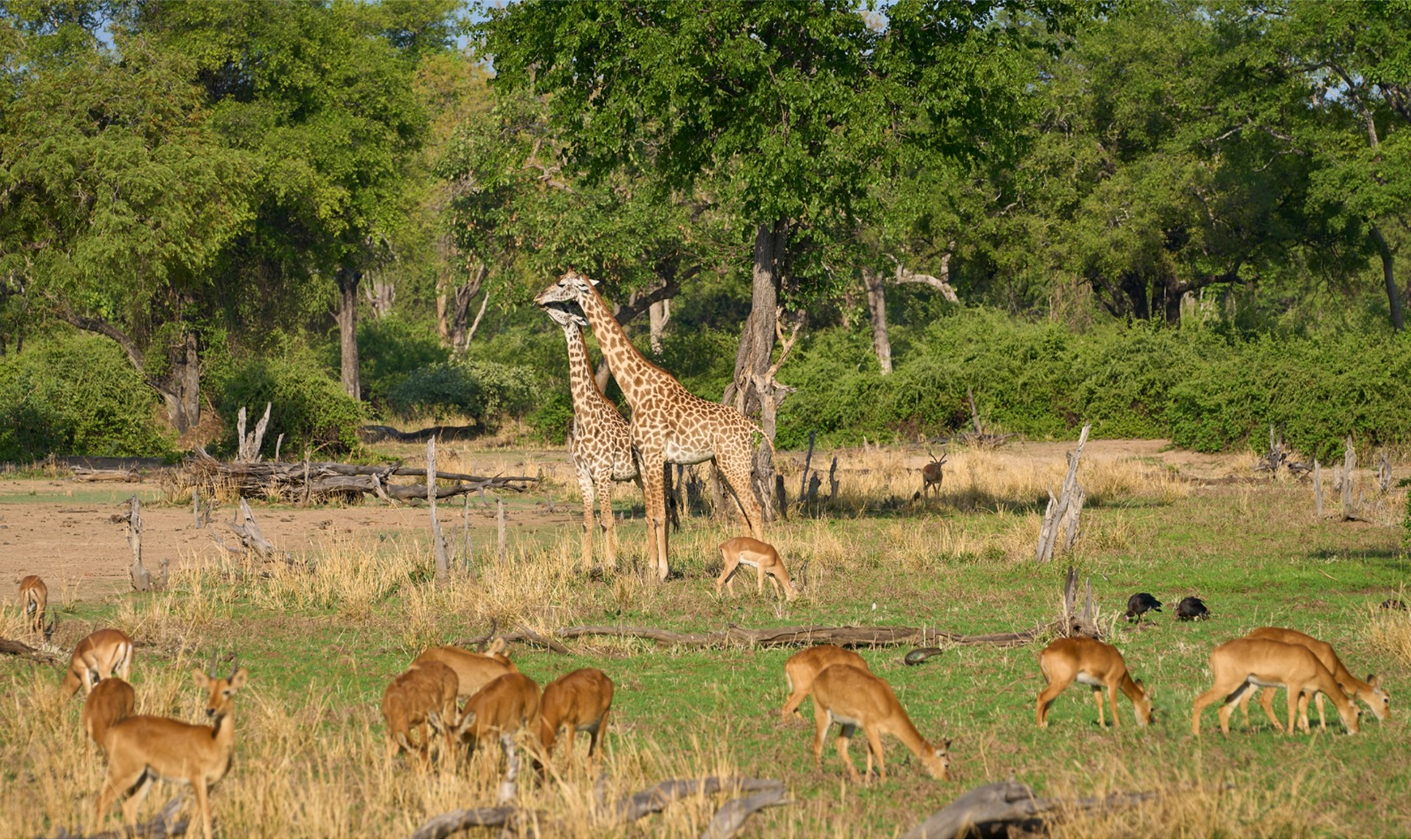
South Luangwa National Park is said to be the birthplace of the walking safari. Along the meandering Luangwa River, pods of hippos crowd into shrinking pools, while massive Nile crocodiles bask on the sandy banks. The river's floodplain serves as a stage for some of Africa's most concentrated wildlife viewing – herds of elephants cross between towering stands of ebony trees, and elusive leopards are remarkably common here, often spotted prowling through the riverside thickets at dusk. Birdwatching here is tremendous to boot, with around 400 species recorded.
A 100+ Year Old British Manor
Sitting incongruously in the Zambian bush is Shiwa N’gandu, a 1920s English manor built by Sir Stewart Gore-Browne. Tour the library's rare African manuscripts and the estate's working farm. Watch for birds while soaking in the blue-green lagoon, surrounded by palms at nearby Kapishya Hot Springs.
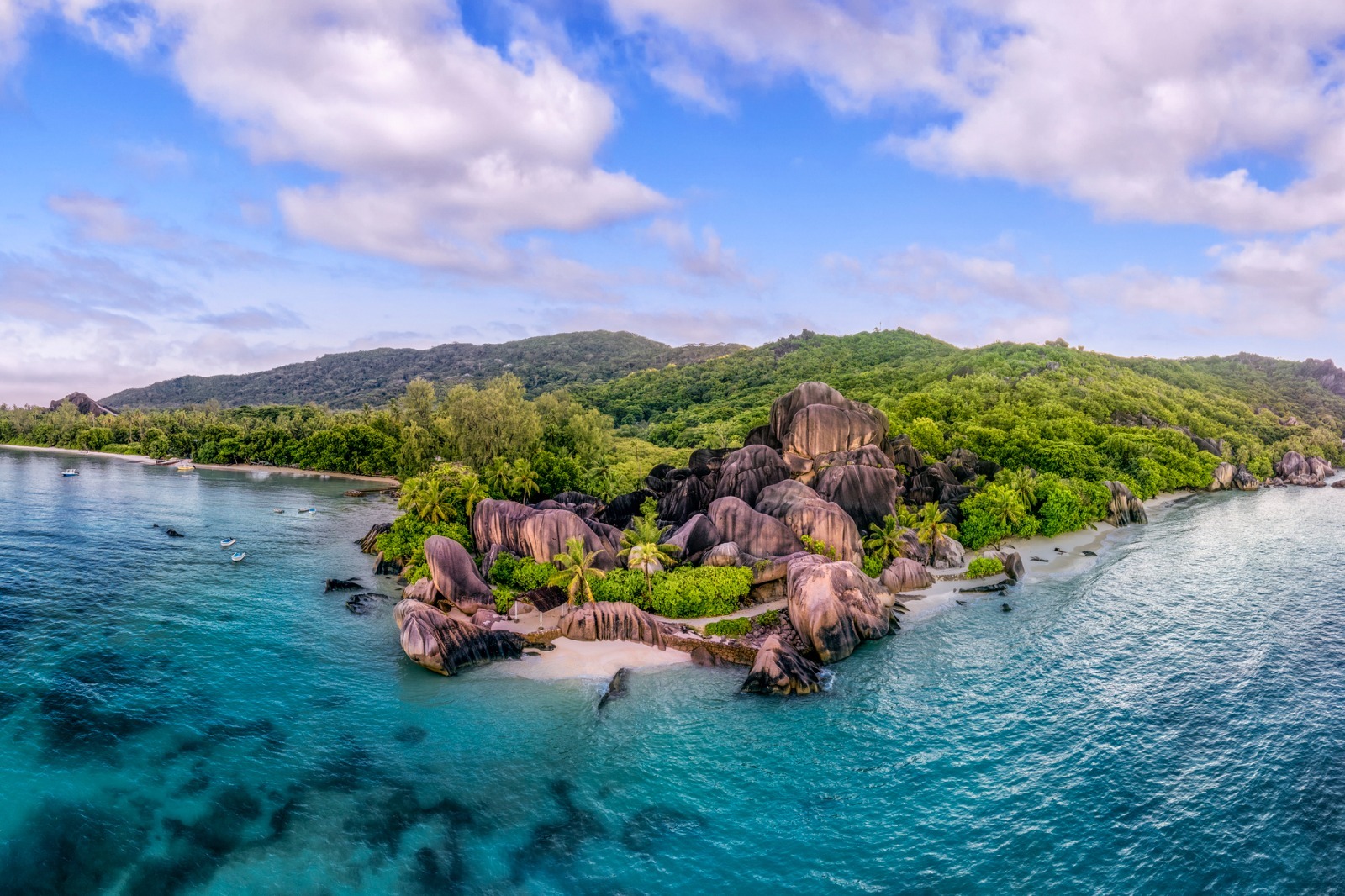
SEYCHELLES
Seychelles Introduction
Unlike the safari-focused tourism available on the mainland, this Indian Ocean archipelago delivers a different face of Africa entirely — one of granite boulders spilling into turquoise waters and palm trees bowing over powder-white beaches. While the Seychelles' reputation for luxury resorts and honeymoon splendor is well-earned, particularly on Mahé and Praslin islands, there's more here than just postcard-perfect shorelines. The islands harbor some of the world's rarest species, from giant Aldabra tortoises to the Coco de Mer palm's massive seeds, found nowhere else on Earth. Though reaching these remote islands comes at a premium, and prices rival those of the Maldives, the Seychelles' strict environmental protections and limited development mean you're experiencing one of the planet's most pristine tropical ecosystems.
Vallée de Mai, Praslin
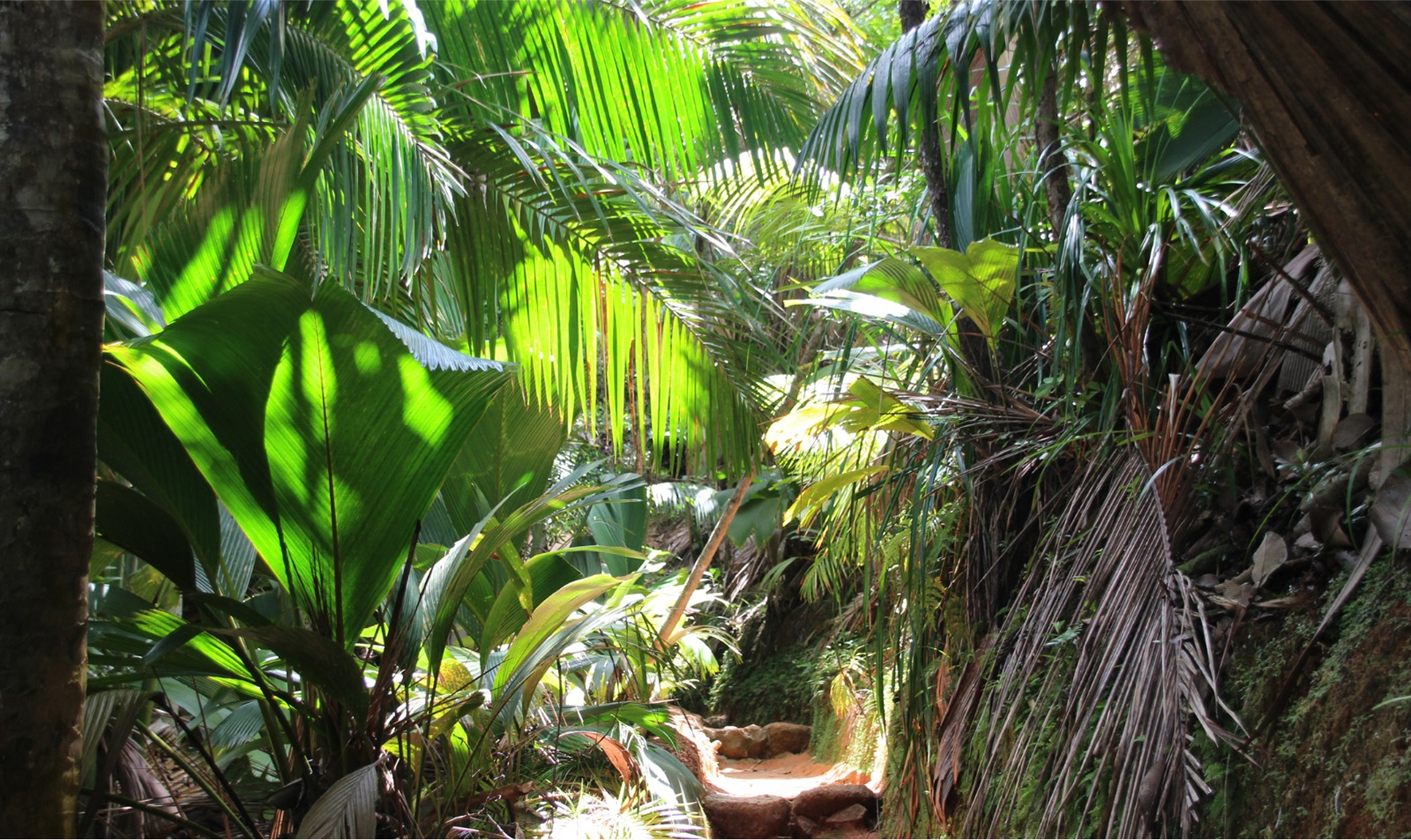
Threading through the prehistoric forest of Vallée de Mai feels like stepping back in time, where massive coco de mer palms create a dense canopy overhead. This UNESCO site houses the world's largest population of endemic palms, whose massive seeds (weighing up to 55 pounds) are found nowhere else on Earth. Visit in the early morning to catch sight of the rare black parrot (and avoid the midday heat). The marked trails take 1-2 hours to explore, with the longer route offering the best chances to spot wildlife.
La Digue Island
La Digue operates on island time, where bicycle wheels and ox carts replace car engines. The island's showstopper is Anse Source d'Argent, where pink granite boulders frame white shores, but savvy travelers head to Grand Anse or Petit Anse for equally stunning views without the crowds. Rent a bike from one of the shops near the jetty to explore the island's 6-mile circumference. Time your visit to the L'Union Estate coconut plantation for late afternoon, when the setting sun illuminates the colonial-era buildings and vanilla plantations.
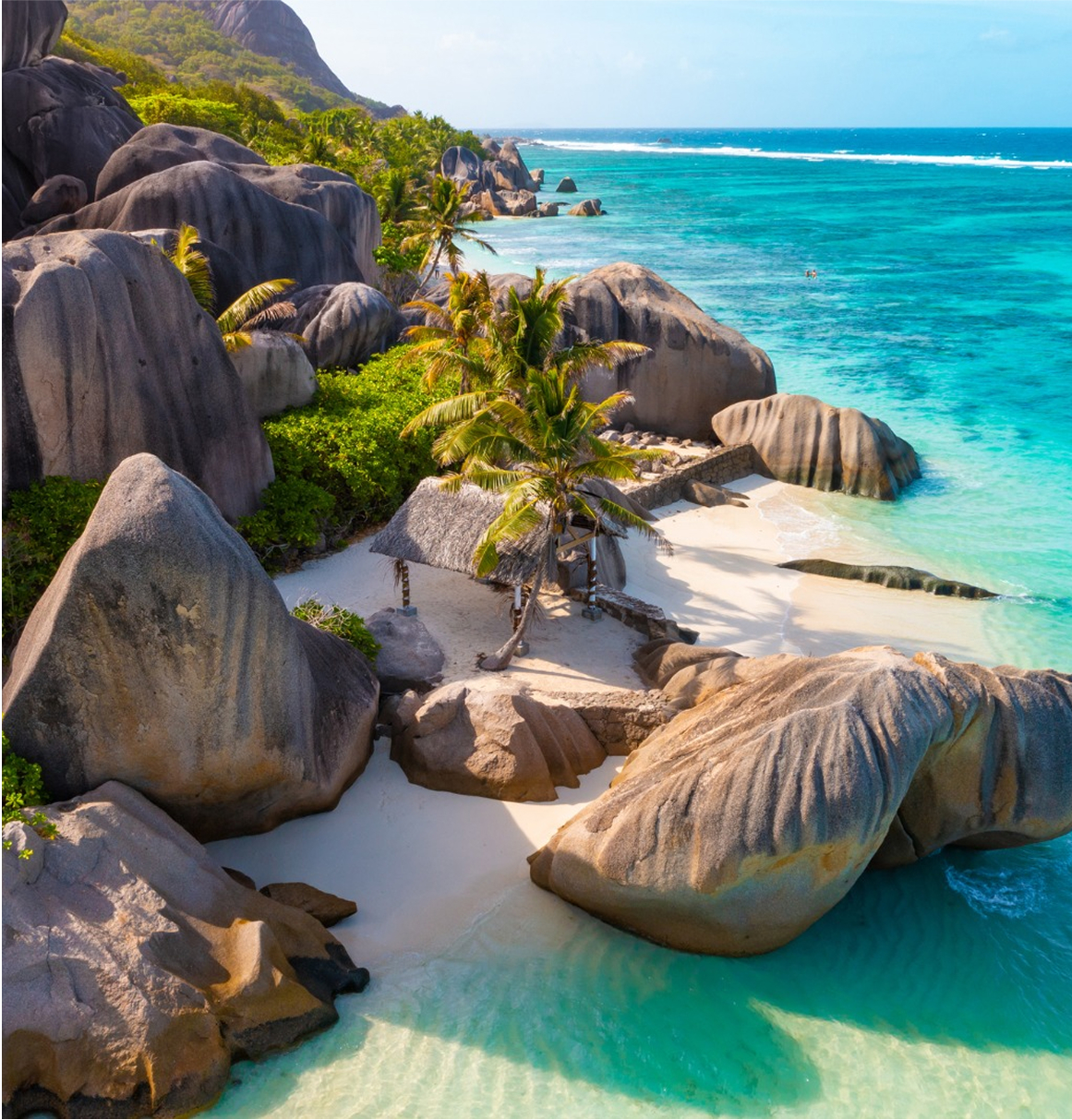
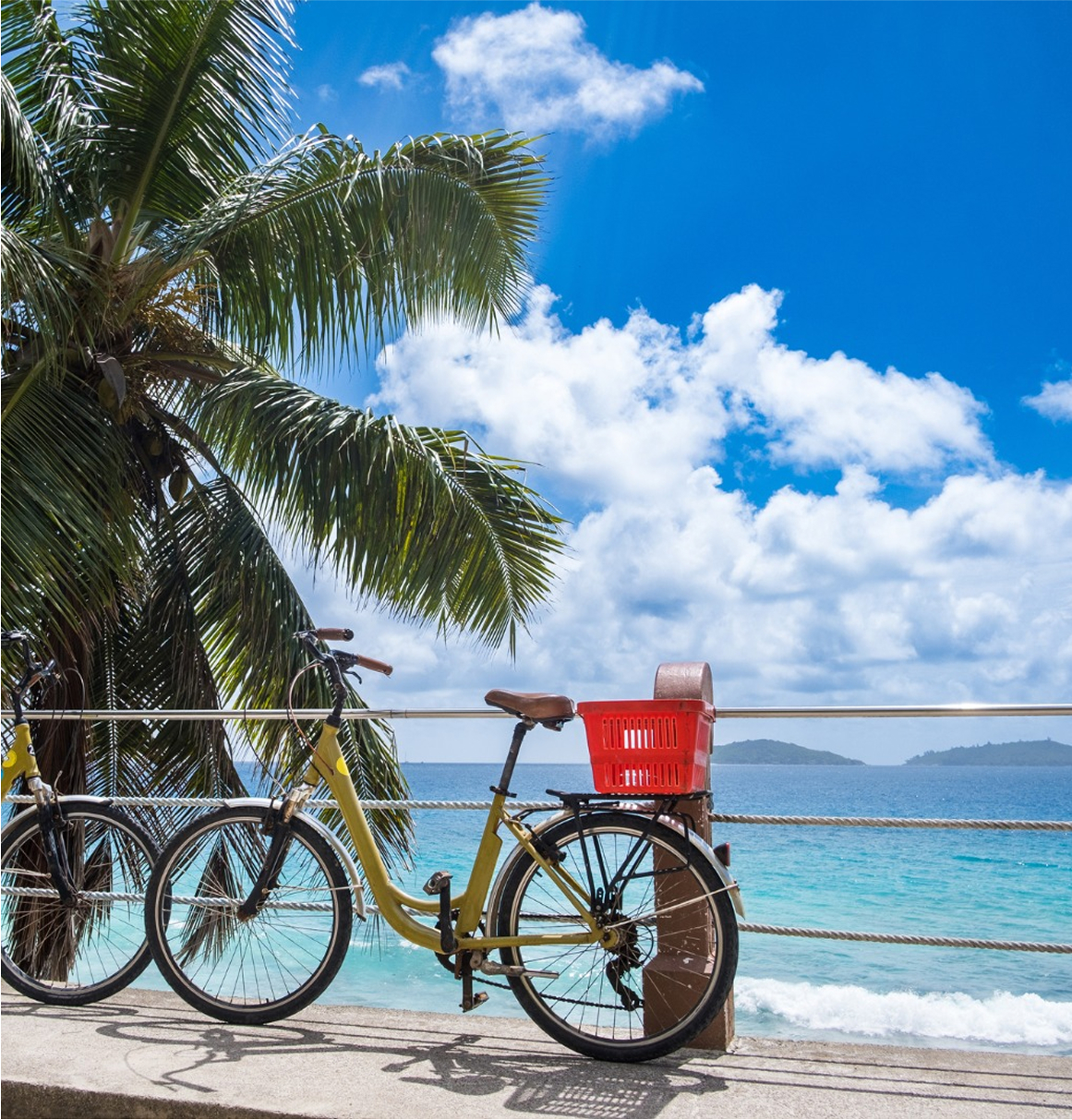
Aldabra Atoll
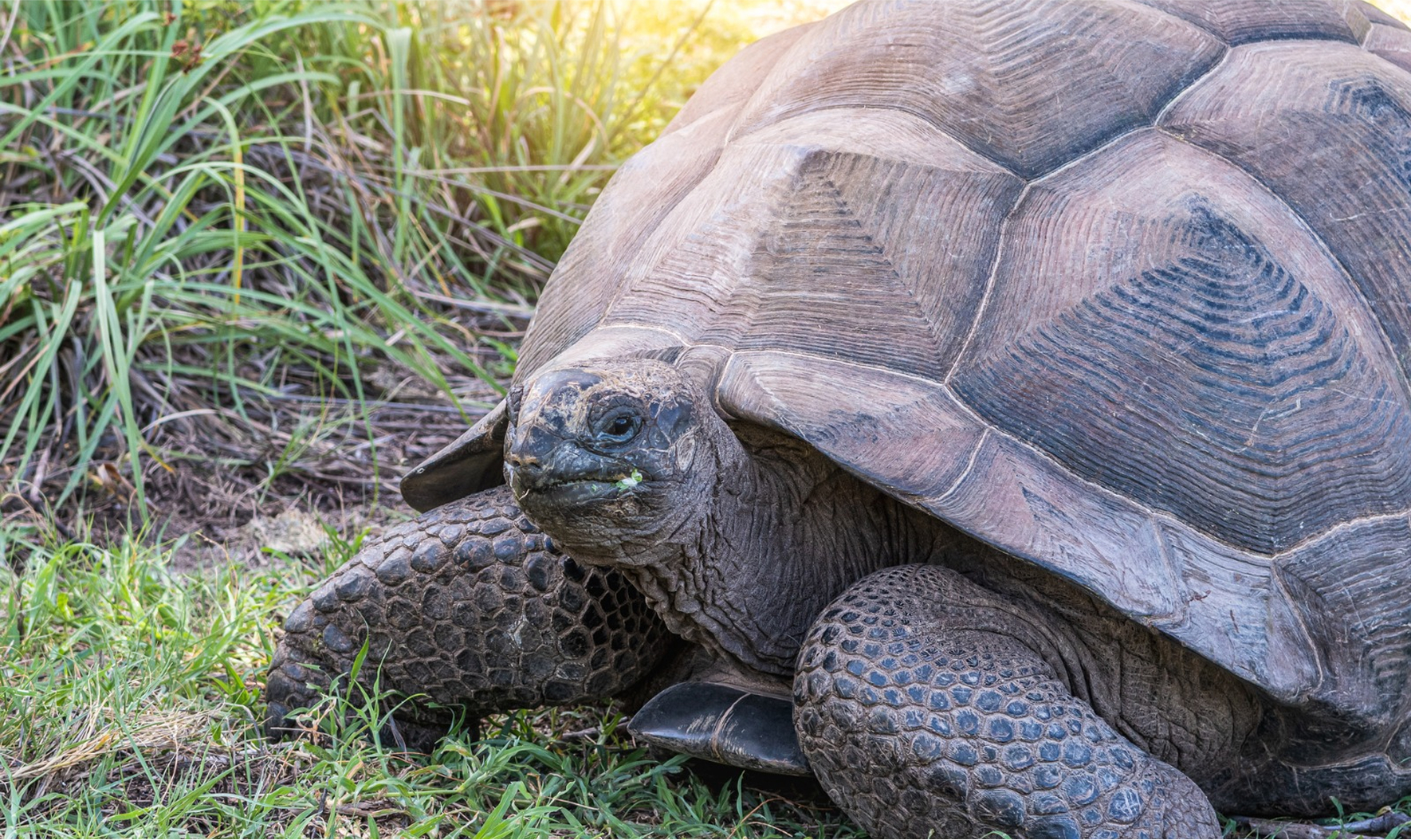
Reaching this remote coral atoll requires careful planning and special permits, but the reward is access to one of the most pristine ecosystems on Earth. Aldabra hosts the world's largest population of giant tortoises – over 100,000 roam freely across the limestone terrain. The atoll's isolation has preserved a unique marine environment, where hammerhead sharks patrol the channels between islets during tidal changes. Visits are strictly controlled, with only a handful of small expedition vessels permitted to anchor each year.
Morne Seychellois National Park
Covering a significant swath of Mahé island, this park offers the archipelago's most challenging hiking with actual elevation gain – a rarity in the Seychelles. The Copolia Trail (which takes 2-3 hours to complete) delivers the best effort-to-view ratio, leading to a granite plateau with 360-degree views across the island and Indian Ocean. Start hikes before 7 am to avoid both the heat and the afternoon clouds that typically obscure the peaks. You can hire a local guide (book through the Seychelles National Parks Authority) to access lesser-known trails and spot endemic plants like the endangered jellyfish tree.
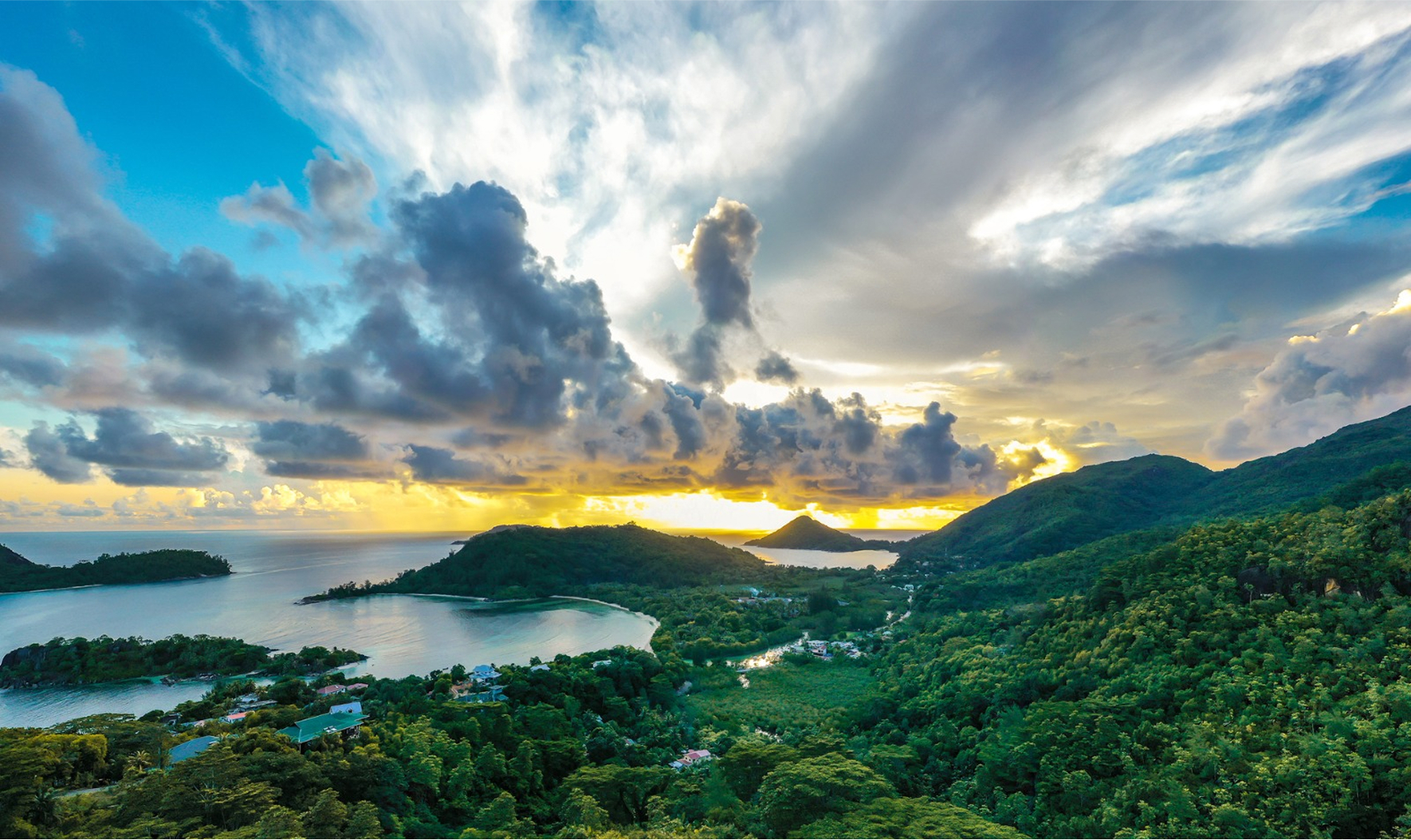

Plan Your Trip













